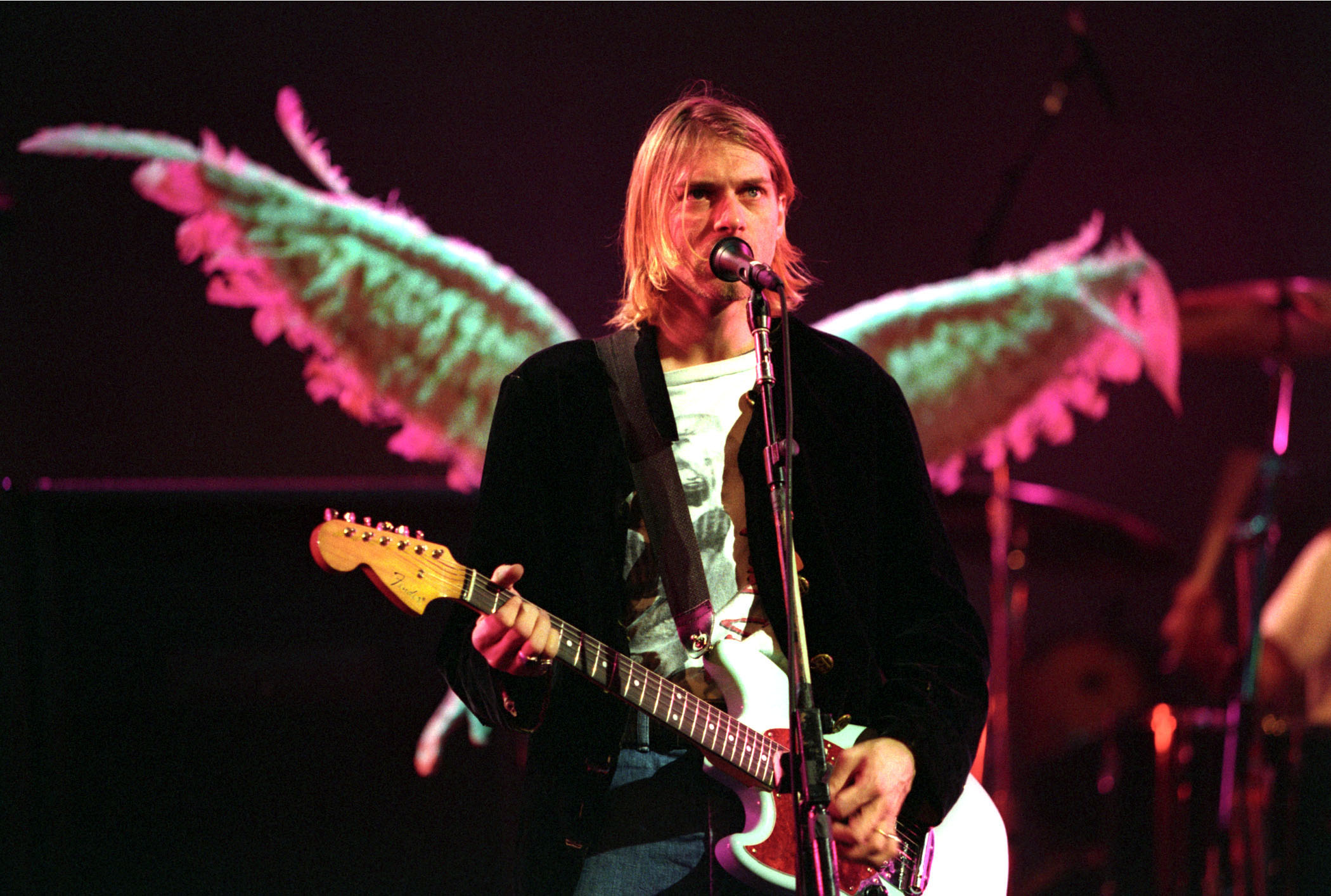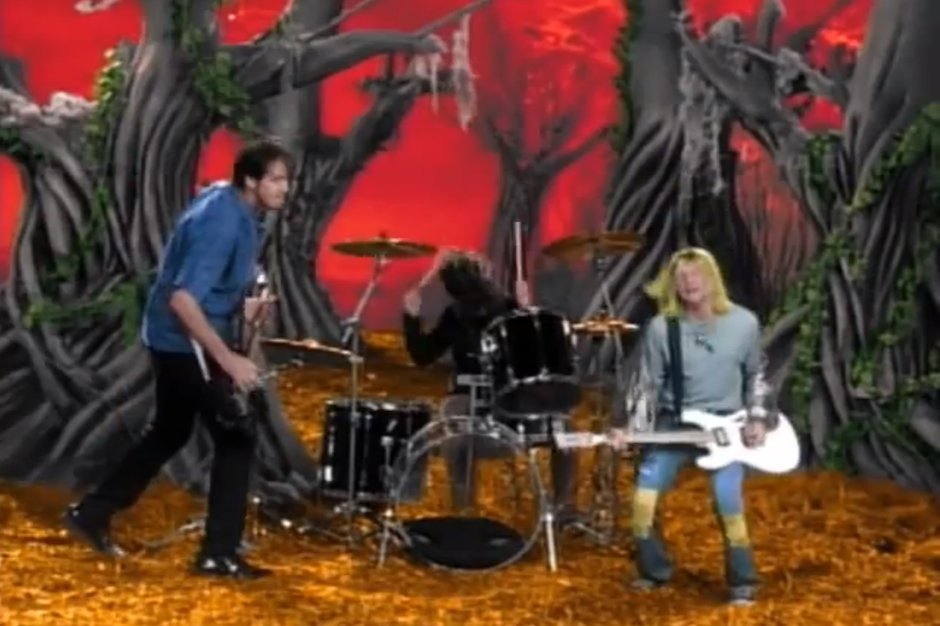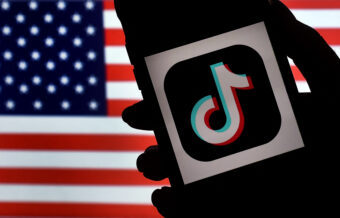In September of 1993, Nirvana, the biggest group in the world, was preparing to follow up an album that people were already saying defined a generation. To support the record — In Utero, released 20 years ago this Saturday — they released a single music video, ultimately their last as a band. Directed by Anton Corbijn, “Heart-Shaped Box” was a disturbing clip centered around how sickness can slowly devour the human body. Its surreal images — fetuses hanging in a tree, a woman with organs painted on, a girl in a black Klan robe — play out against the crass colorization treatment that old-school Hollywood films were undergoing at the time: Corbijn shot the original footage in color, transferred it to black and white, then sent the footage to Mexico where each frame was hand-painted in style that mimicked Technicolor. The majority of the ideas for the images and the look of the video came from frontman Kurt Cobain directly — fetuses and body shame were already reoccurring themes in his music — and he choose Corbijn to help express them. The director was best known as a photographer (perhaps most famous for the cover of U2’s Joshua Tree), but had been filming videos since 1983, making his washed-out, grainy feel inseparable from Depeche Mode. In the two decades since, Corbijn has continued to sporadically make videos (Metallica, Coldplay, and the Killers have all enlisted his unique vision), and earlier this week he even helmed the lead-off clip, “Reflektor,” for Arcade Fire, another generation-defining band who are releasing their most-anticipated album. Here, Corbijn discusses his most iconic clip.
Do you know why Nirvana approached you to do the video for “Heart-Shaped Box”?
I had met the band for photo shoots previously and Kurt became aware of my videos for Echo and the Bunnymen, which he liked a lot, so I guess that was the groundwork for the connection.
At the time you didn’t seem to be making many videos a year, especially in comparison to other directors. Why did you agree to do this one?
I never made that many videos because I never considered it my prime occupation, so I tried to be selective. This particular song was great, and I liked the band, so [it was] not a difficult decision to make.
In previous interviews, you said that many of the ideas for the images in the video came directly from Kurt Cobain. Was that an exciting way to work?
I tend to look at a good idea for what it is, regardless of its source, so when Kurt presented his very precisely thought-out ideas, there was no way to ignore that quality and not to use them. It is extremely rare to encounter musicians with such well-expressed and original ideas for their own work. It certainly was not frustrating, and accordingly, I always attribute most of the ideas to Kurt.

Also Read
Kurt Cobain Forever
How would you describe Kurt as an artistic collaborator?
Ideal.
What elements and ideas did you add to the video?
The ones that come to mind are the big woman representing Mother Earth, the road through the flowers, the mechanical birds, and the fake butterflies. I added some more theatrical aspects to it, I guess.
The band notoriously had a difficult time on the set for the “Smells Like Teen Spirit” video. Was there trepidation when they were actually filming “Heart-Shaped Box,” or did they seem comfortable?
[They were] very pleasant and in great spirits. It was a very positive atmosphere.
For such a serious and, at times, upsetting video, there’s also some goofy stuff in there, too, like the mechanical crows mouthing “hey” and “wait” or how Kurt bounces around the chair in the star room like a little child. What role do you think humor has in the video?
Some stuff was not scripted and the birds stuff was my kind of Dutch humor, I guess. What was amazing to me was that MTV didn’t censor the video at all despite the heavy issues that we were dealing with, and my guess is that the colors were so pleasing and strong that they never looked beyond that. I had some other videos censored by them for minor stuff, so I was prepared for the worst, but nothing.
What were the reasons given for why you had to change the director’s-cut version of the song to the version that aired?
It was just one or two shots at the end that Courtney [Love] preferred, so they initially went with the one she pushed for, but Kurt let the one I suggested be shown a good week after the initial video was released. No big stuff, just a preference.
When you work with younger artists now, is “Heart-Shaped Box” one of the videos they cite as to why they want to work with you?
I don’t think people work with me because of one thing I created and I don’t work much with new bands anyway. That was a period in my life when I was young too.




